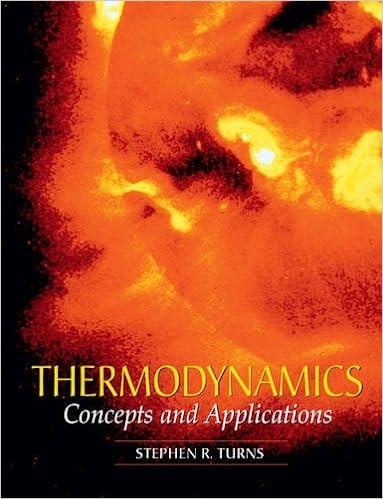Answered step by step
Verified Expert Solution
Question
1 Approved Answer
please solve e, f, g Question: Design a scalding unit for slaughtered chicken to loosen their feathers before they are routed to feather-picking machines with
please solve e, f, g 

Question: Design a scalding unit for slaughtered chicken to loosen their feathers before they are routed to feather-picking machines with a capacity of 2000 chickens per hour under the following conditions: The unit will be of immersion type filled with hot water at an average temperature of T1 at all times. Chickens with an average mass of 2.2kg and an average temperature of 25C will be dipped into the tank, held in the water for tmin, and taken out by a slow-moving conveyor. Each chicken is expected to leave the tank W percent heavier as a result of the water that sticks to its surface. The center-to-center distance between chickens in any direction will be at least 30cm. The tank can be as wide as 3m and as high as 60cm. The water is to be circulated through and heated by a hot gas, but the temperature rise of water will not exceed T2 as it passes through the heat exchanger. The water loss is to be made up by the city water at an average temperature of 16C. The walls and the floor of the tank are to be insulated with a cm-thick urethane layer. The unit operates 24h a day and 6 days a week. Assuming reasonable values for the average properties, recommend reasonable values for the quantities related to the thermal aspects of the scalding tank, including; a) The mass flow rate of the make-up water that must be supplied to the tank, b) The length of the tank, c) The velocity of the conveyor and thus the chickens through the tank d) The final temperature of the chicken at the surface and the center of chicken after being dipped for t min, c) The rate of heat transfer from the water to the chicken, in kW The total rate of heat loss from the wall surfices ( 4 sides), assume thickness and material of construction for the tank: f) The total rate of heat loss from from the wall surface ( 4 sides), assume thickness and material of constructions for the tank g) The rate of heat loss from the top surface of the tank and if it is significant (assume h for air), h) The size of the heat exchanger is to be used for heating the water i) The energy cost of the scalding unit per month in RM. Question: Design a scalding unit for slaughtered chicken to loosen their feathers before they are routed to feather-picking machines with a capacity of 2000 chickens per hour under the following conditions: The unit will be of immersion type filled with hot water at an average temperature of T1 at all times. Chickens with an average mass of 2.2kg and an average temperature of 25C will be dipped into the tank, held in the water for tmin, and taken out by a slow-moving conveyor. Each chicken is expected to leave the tank W percent heavier as a result of the water that sticks to its surface. The center-to-center distance between chickens in any direction will be at least 30cm. The tank can be as wide as 3m and as high as 60cm. The water is to be circulated through and heated by a hot gas, but the temperature rise of water will not exceed T2 as it passes through the heat exchanger. The water loss is to be made up by the city water at an average temperature of 16C. The walls and the floor of the tank are to be insulated with a cm-thick urethane layer. The unit operates 24h a day and 6 days a week. Assuming reasonable values for the average properties, recommend reasonable values for the quantities related to the thermal aspects of the scalding tank, including; a) The mass flow rate of the make-up water that must be supplied to the tank, b) The length of the tank, c) The velocity of the conveyor and thus the chickens through the tank d) The final temperature of the chicken at the surface and the center of chicken after being dipped for t min, c) The rate of heat transfer from the water to the chicken, in kW The total rate of heat loss from the wall surfices ( 4 sides), assume thickness and material of construction for the tank: f) The total rate of heat loss from from the wall surface ( 4 sides), assume thickness and material of constructions for the tank g) The rate of heat loss from the top surface of the tank and if it is significant (assume h for air), h) The size of the heat exchanger is to be used for heating the water i) The energy cost of the scalding unit per month in RM 

Step by Step Solution
There are 3 Steps involved in it
Step: 1

Get Instant Access to Expert-Tailored Solutions
See step-by-step solutions with expert insights and AI powered tools for academic success
Step: 2

Step: 3

Ace Your Homework with AI
Get the answers you need in no time with our AI-driven, step-by-step assistance
Get Started


